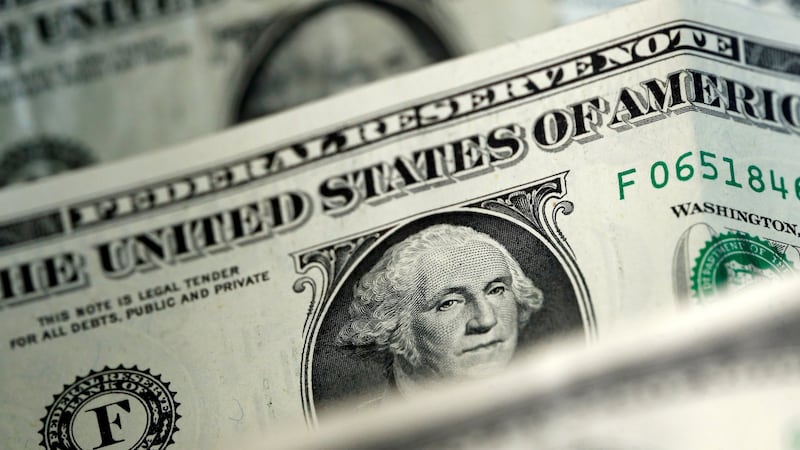The dollar sign is one of the most recognisable symbols in the world, appearing on keyboards and keypads, menus and price tags from São Paulo to Singapore, Sydney to San Francisco.
It denotes the official currencies of over 30 sovereign nations and dependent territories in Africa, Asia, Oceania, Antarctica and the Americas – Europe being the notable exception. And, of course, it is the symbol of a currency, that of the United States, which is traded, officially and unofficially, in every corner of the globe.
Despite much, often outlandish, speculation about the origins of the dollar sign, it is widely accepted by historians that it evolved from abbreviations for the Spanish dollar, a precursor to the US dollar as a global unit of currency.
One version holds that the dollar sign can be traced to the mark – the superimposed letters “P”, “T”, “S” and “I” – used to identify Spanish coins struck in the mint at Potosí, in modern-day Bolivia, the most valuable silver mine in the world during the early modern era.
A more credible hypothesis is that the dollar sign evolved from the depiction of the Pillars of Hercules wrapped in banners
Another theory is that the dollar sign came about from the union of an “R”, or a “P”, with an “8”. Spanish silver dollars were worth eight reales, hence the term “pieces of eight” preferred by pirates and their parrots.
The Spanish terms for a “piece of eight” were real de a ocho or peso de ocho. Thus an “R” or a “P” placed on an “8” signified a “piece of eight”.
A more credible hypothesis is that the dollar sign evolved from the depiction of the Pillars of Hercules wrapped in banners, which appeared on the reverse of the Spanish silver dollar and which still features on the coat of arms on the Spanish flag. If one looks closely at the right-hand pillar on the back of a mid-18th-century dollar, one can clearly make out the “$” shape, the “S” being formed by the sweeping banner around the vertical stroke of the pillar.

However, the generally accepted theory attributes the arrival of the dollar sign in the 1770s to the scrawl of Oliver Pollock, an Irish-born merchant and plantation owner.
Born near Bready in Co Tyrone, Pollock left for Philadelphia in 1760 with his father, two brothers and a nephew. He soon amassed a fortune trading goods in the West Indies, developing a mutually beneficial relationship with the Spanish colonial authorities.
Despite backing the right horse, at the end of the war, Pollock had lost his entire fortune, was being pursued by creditors and, finally, ended up in debtors' prison
In 1768, Pollock settled in New Orleans, then under Spanish rule, and continued to make vast profits trading between Spanish, French, and British ports. At the outbreak of the American Revolution, Pollock mediated between the Continental Army and the Spanish authorities for the supply of much-needed arms, ammunition, provisions, clothing and blankets.
By 1778, Pollock was bankrolling the Illinois Campaign of George Rogers Clark with his own funds, ostensibly because of patriotic zeal, but also, no doubt, in the expectation that he would accrue handsome returns. However, despite backing the right horse, at the end of the war, Pollock had lost his entire fortune, was being pursued by creditors and, finally, ended up in debtors’ prison.
It is in this context that Pollock, unwittingly, began using the dollar sign as a shorthand for the Spanish peso de ocho. In the 1930s, the historian James Alton James noted the evolution of Pollock’s use in his correspondence of the symbol “Ps” for the Spanish peso de ocho.
In the mid- 1770s, Pollock was writing the symbol in one continuous flourish but with a small “s” at the top of a narrow “P”, the latter formed by a couple of close-knit vertical strokes.
By 1778, and shouldering an ever-increasing financial burden, Pollock had brought the now larger “S” down onto the “P”, forming the recognisable dollar sign.
This new symbol appeared in Pollock’s correspondence with the Liverpool-born financier Robert Morris, one of the signatories to the US declaration of independence, who was chiefly responsible for procuring financial aid for the revolutionary cause.
As finance minister in the 1780s and founder of the first US national bank, the Bank of North America, it was Morris who was responsible for popularising the usage of the dollar sign.
In 1785, the Confederation Congress adopted the dollar as the currency of the United States. The first coins were struck in 1794. Three years later, the dollar sign appeared in print for the first time.
Despite its origins and multinational usage, the dollar sign remains quintessentially American. Born during the American Revolutionary War, it has since become a symbol of acquisitiveness, the power of the “buck” and the “American Dream” at the heart of US culture. It is perhaps appropriate then that it is an Irish emigrant who is credited with its creation.










